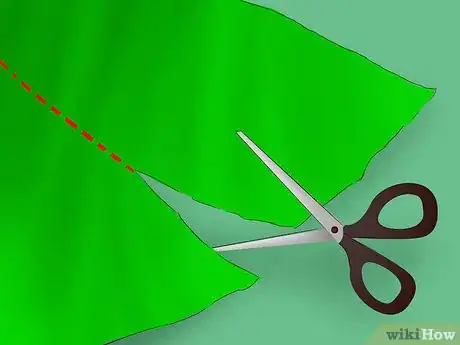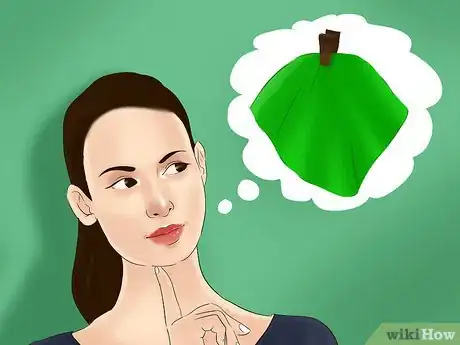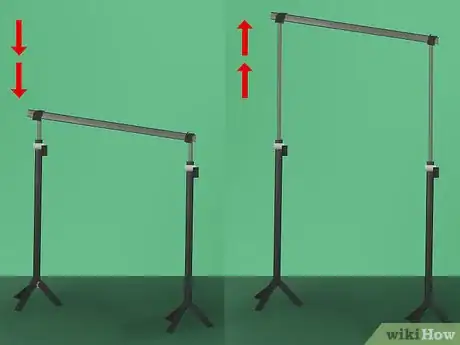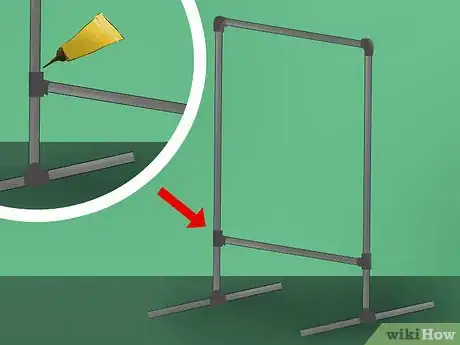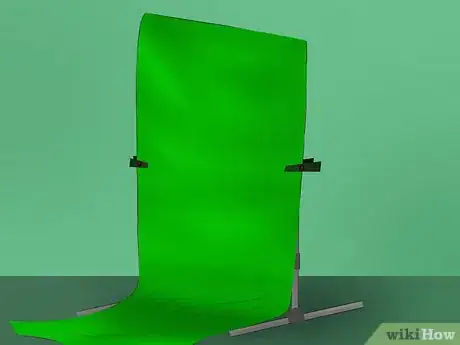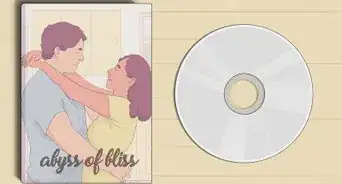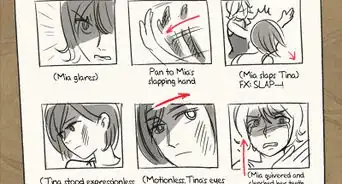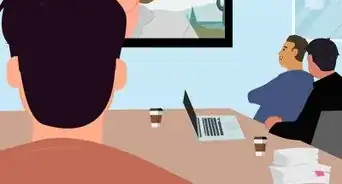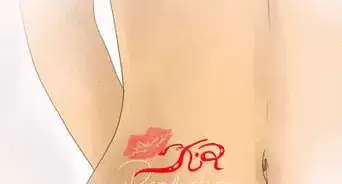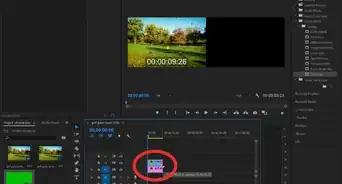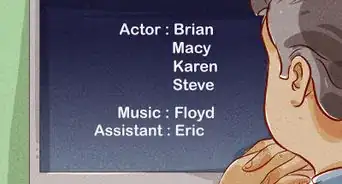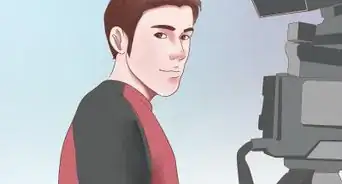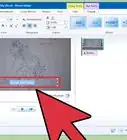X
This article was co-authored by wikiHow Staff. Our trained team of editors and researchers validate articles for accuracy and comprehensiveness. wikiHow's Content Management Team carefully monitors the work from our editorial staff to ensure that each article is backed by trusted research and meets our high quality standards.
This article has been viewed 131,976 times.
Learn more...
A green screen is a key component in both amateur and professional filmmaking that allows one to create backdrops in place of the green color in the shot. Create your own green screen setup that is easy to make and easy to transport for any of your own filmmaking projects.
Steps
Part 1
Part 1 of 3:
Preparing the Materials
-
1Cut pieces of PVC pipe. Buy ½ inch PVC pipe from a standard hardware store, along with 8 T-joint connectors, 4 end caps, and 2 elbow joints, all in the same ½” size. Get 4 10-foot lengths and use a hacksaw or ask staff at the hardware store to cut the following pieces from them:
- One 6ft 1/2″ PVC
- Four 3ft 1/2″ PVC
- Five 2.5ft 1/2″ PVC
- Two 2ft 1/2″ PVC
- Four 1ft 1/2″ PVC[1]
- Note that these lengths include enough material to brace the frame with two horizontal pieces and a small vertical piece that connects them. If you use thicker PVC pipe (like ¾” or 1”) the frame will be sturdier and you may not need this bracing.
-
2Cut and sew fabric. Look in any store that sells fabric for a bright green color of natural or synthetic fabric that won't wrinkle easily. Purchase at least 2-3 yards of fabric that is 48 inches wide or wider.
- Note that a standard width for fabric is 48 inches, or 4 feet. If you want a green screen wider than that, look for fabric that comes in a 54" or 60” width, or sew two pieces of fabric together for an even larger size.
- It’s also a good idea to iron your fabric so that it is free of wrinkles before use as a green screen. Visible wrinkles that show up on camera will interfere with the keying process that replaces the color with another image.[2]
- If you cannot find a suitable green color of fabric, you may be able to paint or dye fabric to your desired shade. However, this method may not turn out as even or consistent as a pre-dyed fabric.
Advertisement -
3Decide how you will attach the screen. Determine how you would like to attach your green fabric to the top of the frame. Use clamps, sewing, or elastic depending on your preferences.
- Get A clamps (or spring clamps) to clamp the fabric to the top of the frame. You will also use these to attach the fabric smoothly to the sides of the frame, so you can grab a few more with very little expense from a hardware store.
- Try sewing a “pocket” into the top of the fabric by folding it over and sewing to create a long loop through which to slide the PVC pipe.
- Use approximately 6 inch pieces of elastic band fabric, folded over to create loops large enough to fit around your PVC pipe. Then sew or staple these loops to the fabric wherever you want it to connect to your frame.[3]
Advertisement
Part 2
Part 2 of 3:
Building the Stand
-
1Connect your PVC pipe. Use your connectors to attach the pieces of PVC pipe together to create a rectangular frame with two “feet.” Build the frame as follows:
- Use the two elbow connectors to attach your 6’ PVC piece to two of your 2.5’ pieces.
- Use one T-joint connector on each side to attach those 2.5’ pieces to two more 2.5’ pieces (which will be vertical) and two 3’ pieces (which will be horizontal) to fill the T-joints.
- Fill another T-joint connector on each side with the 2.5’ pieces you just installed, two more 3’ pieces (horizontal), and your two 2’ pieces (vertical).
- Connect the horizontal 3’ pieces in the middle with two T-joints and one 2.5’ piece vertically between them.
- Make the feet by connecting two 1’ pieces together with the end of your 2’ piece on either side using a T-joint. Then add end caps to the open ends of all four 1’ pieces.[4]
-
2Try an alternative with microphone stands. Use microphone stands as an alternative method for an adjustable stand. You may choose this method if you already have mic stands available, if you want to use less PVC pipe, or you want the height of the frame to be more easily adjusted.
- Build a simpler PVC frame of three long pieces for the top and sides of the frame. Then use two microphone stands with the extensions removed and slide the side pieces of PVC pipe over the mic stands so the frame stands upright. Adjust the height of the frame by raising the PVC higher or lower on the mic stands and placing a clamp underneath to keep in place.[5]
- Or try using just one piece of PVC pipe for the top bar of the frame, then slide either end of it into a mic stand grip. Adjust each mic stand accordingly to change the height of the screen.
- Note that when using microphone stands, you may want to choose thicker PVC pipe, like 1” PVC, for sturdiness.
-
3Keep PVC loose or glue it. Glue your PVC frame pieces together using PVC glue if you want to make the frame more permanent. Keep the pieces unglued if you want to take the frame apart later.
- Choose to glue if you’re sure you want to keep the frame intact and at the same size and structure. It can still be portable due to the very light weight of the PVC.
- Choose to keep the frame unglued if you want to make it even more portable by breaking it down for easier travel or storage. Of course, this will require reassembly each time it’s used.
Advertisement
Part 3
Part 3 of 3:
Assembling and Disassembling
-
1Attach the screen and pull flat. Attach your green fabric to the top bar of your frame using whatever method you choose, be it clamps, a sewed pocket, or elastic straps. Then make it taut across all sides with clamps.
- If using a sewed pocket or elastic strap loops, slide them onto the top bar before connecting it to the rest of your frame.
- Adjust the fabric so that it falls flat and evenly from the top of the frame. Then use as many clamps as you need to attach it to the sides (and even the bottom) of the frame to create as even, unwrinkled, and unstretched a surface as possible.
-
2Set up in a well-lit area. Set up your green screen frame wherever you wish to use it. The best results for video editing will come from using very even, consistent lighting for filming in front of the green screen.
- Try using the green screen outdoors in overcast weather, or indoors using five individual lights: two main lights (which illuminate the subject being filmed), two fill lights (which illuminate the green screen), and a backlight (which will help distinguish the subject from the green screen for editing).[6]
- Ensure that every time you set up the green screen, the lighting or fabric itself doesn’t illuminate any creases or wrinkles that will show up when filming and affect the editing process of replacing the green color. Iron or steam the fabric if necessary to achieve a smooth surface.
-
3Move or disassemble when done. Easily reposition the entire frame with the fabric still attached, or undo the pieces of the frame to make it a size that’s easy to transport or store.
- To avoid removing the green fabric every time, try rolling it onto the top bar of your frame before disassembling or storing. This will keep the fabric wrinkle-free as well. You can hold the fabric in place once rolled with a few pieces of tape, velcro or elastic straps, or rubber bands.[7]
- It’s helpful to take a picture or draw a quick diagram of your assembled frame before taking it apart. This will make it easier to reassemble in the same way next time you use it.
Advertisement
Community Q&A
-
QuestionCan I use green matte without any lighting?
 Community AnswerAs long as the screen is visible to the camera, yes.
Community AnswerAs long as the screen is visible to the camera, yes.
Advertisement
Things You'll Need
- ½”, ¾”, or 1” PVC pipe
- PVC pipe fittings of matching sizes
- Hacksaw or PVC pipe cutter (if cutting yourself)
- Two microphone stands (optional)
- Green fabric
- ”A” clamps/spring clamps
References
- ↑ http://www.biblemoneymatters.com/how-to-create-a-diy-green-screen-setup/
- ↑ https://www.youtube.com/watch?v=JwZQq156MDM
- ↑ https://www.youtube.com/watch?v=nVH4-pn3tj0
- ↑ http://www.biblemoneymatters.com/how-to-create-a-diy-green-screen-setup/
- ↑ https://www.youtube.com/watch?v=Kclldwox6HE
- ↑ https://www.youtube.com/watch?v=JwZQq156MDM
- ↑ http://www.jeffgeerling.com/articles/photography/diy-greenscreen
About This Article
Advertisement

